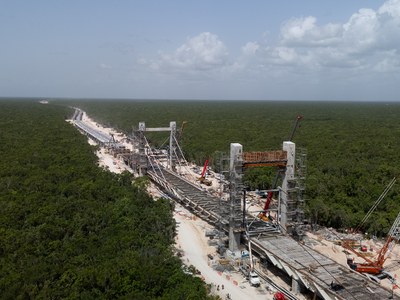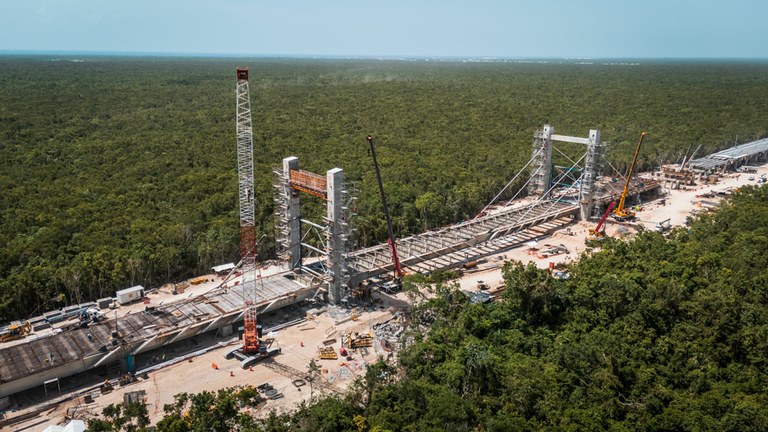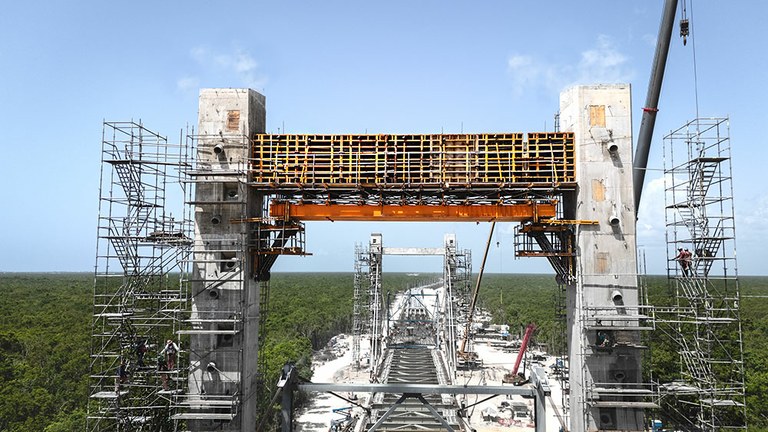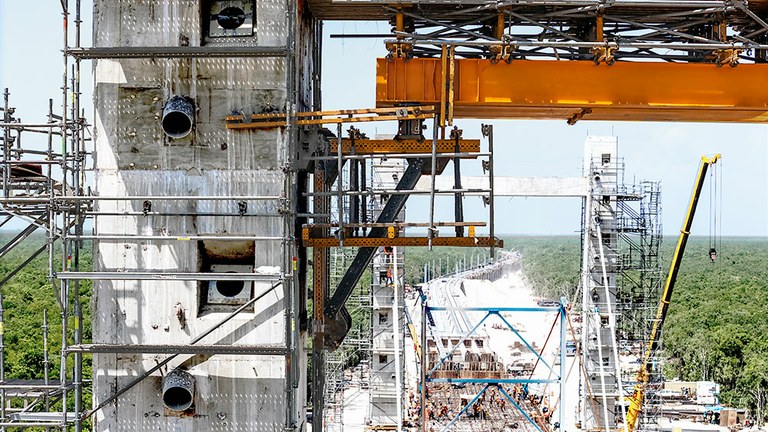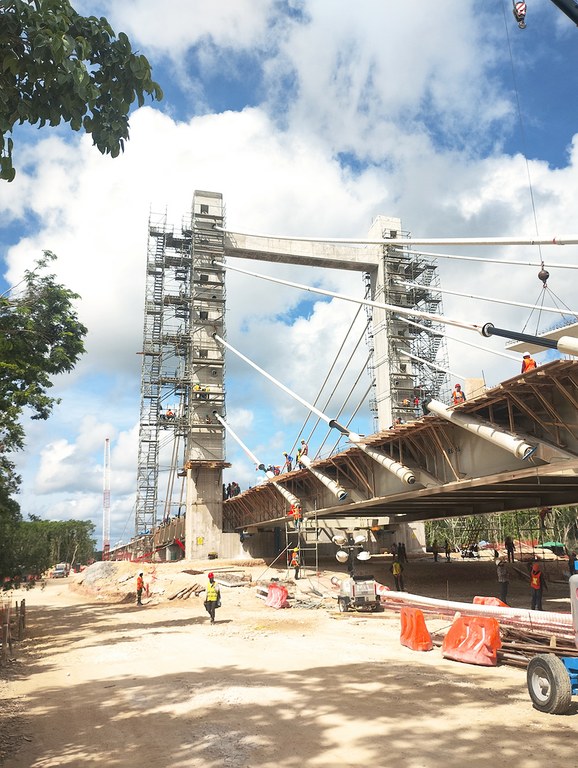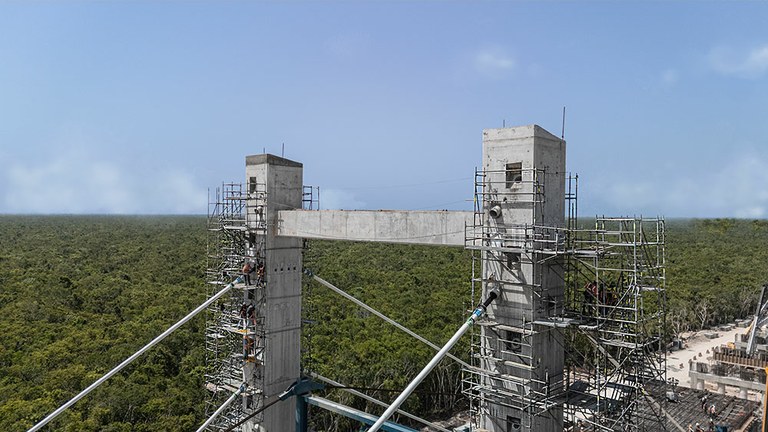Engineering Solutions in Mexico’s First Cable-Stayed Railway
In Section V of the project, the works posed considerable technical challenges due to the presence of karstic soil. To overcome these geological conditions, 42.1 kilometres of elevated track and 25.6 kilometres over embankment were designed. One of the section’s most notable structures is a 266 meter cable-stayed bridge, engineered to preserve the Garra del Jaguar cave in Tulum. This structure is supported by two main axes, each consisting of a pair of 33.40 meter-high pylons connected by a 17.50 metre tie beam. This structural arrangement ensured the bridge’s stability while preserving the surrounding natural environment without interference.
ULMA provided a comprehensive engineering solution for the construction of these elements. The piers were built using ENKOFORM V-100 formwork panels in combination with CR-250 climbing brackets, enabling concreting stages of 3.70 meters. A distinctive feature of the project was the incorporation of concrete openings designed to allow for the installation of ducts required for the post-tensioning of the cable-stayed system. For the construction of the tie beam, high-load MK brackets and DIPE beams were anchored directly to the pylons, enabling a 17.50 metre span to be covered at a height of up to 28 meters without ground support. A safe and efficient formwork solution was developed using a combination of ENKOFORM H-120 and ORMA modular panels for the bottom and side surfaces of the beam. To ensure safe access to the brackets and work areas during the tensioning process, 33 meter-high BRIO stair towers were installed. ULMA supplied all these systems as part of an integrated solution, offering practical and efficient proposals to streamline the workflow.
ULMA’s technical approach was based on a detailed load analysis, taking into account wind conditions of up to 130 km/h. For the system design, the engineering team used digital tools such as Dyamons and Revit to generate 3D models that optimized the planning and execution of every construction detail. ULMA’s extensive experience in major bridge and viaduct projects was essential to ensure efficient execution, smooth coordination with the client, project-aligned logistics, and ongoing technical support on site. This contribution has played a key role in the development of a vital infrastructure for the country.
For more information, watch the video.


